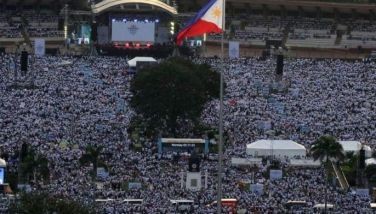DENR: Fecal coliform in city rivers alarming

CEBU, Philippines — Cebu City’s rivers, in general, failed in the Department of Environment and Natural Resources (DENR)’s assessment for the first quarter of 2022 with its fecal coliform level at disturbing levels.
The rivers assessed included Guadalupe, Butuanon, Mahiga, Lahug, Kinalumsan, Bulacao, and Estero de Parian.
The assessment depends on the river body’s classification, according to DENR-Environmental Management Bureau’s regional water quality focal person, Kay Espinosa, during the Cebu City’s River Summit.
Cebu City rivers are classified under class B, C and D: Guadalupe upstream, class B, and downstream, class C, Mahiga (C and D), Lahug (B), Kinalumsan (unspecified), Bulacao (class B and C), Butuanon (class D) and Estero de Parian still unclassified.
Class B are for recreational class which is for contact recreation, including bathing, swimming, skin diving while class C is fishery water, recreational (boating, etc.), and industrial water supply (class 1 from manufacturing processes after treatment) and class D for agriculture, irrigation, live stocks watering, as well as industrial water supply and inland waters.
Water quality parameters include dissolved oxygen level, biochemical oxygen demand (BOD), Total Suspended solids and fecal coliform level, all of which should be low except for the dissolved oxygen level that should be high.
“Sa tanang parameters nga atong makit-an, dapat ang kani rang dissolved oxygen level ang taas. Di ta ganahan nga ang uban taas as possible,” said Espinosa.
Among the parameters, the fecal coliform count, is being highlighted as it is the most controversial parameter that led to the then closure and rehabilitation of the famous Boracay beach. Fecal coliforms are from warm bodied-animals, even including humans.
“Mao ni ang one of the reasons why Boracay was closed down because of high fecal coliform levels,” Espinosa said.
For class B, the fecal coliform count should not be more than 50 mpn (most probable number) per 100liters and not over 400 mpn for class D. MPN is the most commonly applied metric for quality testing of water to ensure it is safe in terms of bacteria present in it.
The only parameter that most of the city rivers passed is Total Suspended solids (kalubogon in Cebuano) as they still have some clarity.
The rivers include Lahug, Mahiga, Kinalumsan, Bulao’s upstream, Estero de Parian, and Guadalupe. Butuanon also barely passed on its dissolved oxygen.
However, all rivers failed in fecal coliform count with Kinalumsan at 13 million mpn, Butuanon river at 5 million mpn, Bulacao with 3 million mpn, Mahiga at 8 million mpn downstream, and 3 million upstream, while Estero de Parian, Lahug and Guadalupe having 240 thousand mpn. According to standards, the number should only have 200 to 400mpn per 100 liters to be safe.
“I don’t really wanna be the bearer of bad news, but this is it… This is actually data. First quarter of 2022,” said Espinosa.
With this, the water quality of rivers in Cebu City has all exceeded the allowed levels based on their classification.
Espinosa ended her report by challenging the Cebuanos saying that how they want rivers to be defined is how they should do their part in helping revive it. — JMD (FREEMAN)
- Latest




























